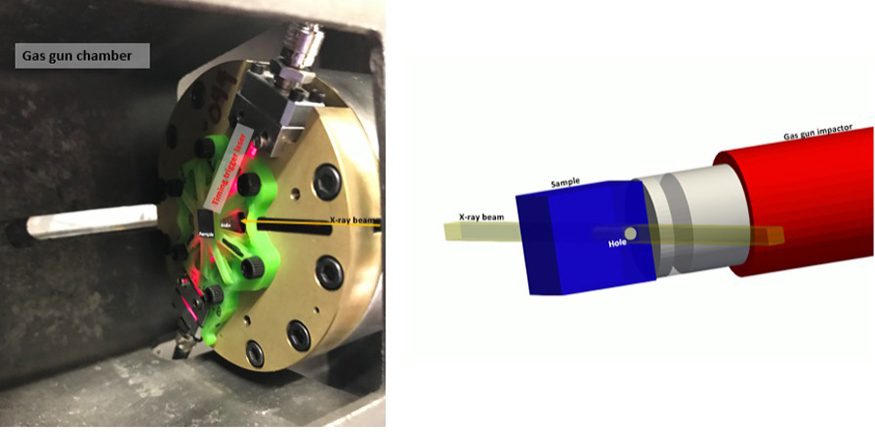In an effort to better understand how materials deform under extreme conditions, researchers at Lawrence Livermore National Laboratory (LLNL) have developed a new experimental method for probing large-strain and high-rate material strength.
In a paper recently published in Acta Materialia, Jonathan Lind, LLNL Physicist and Lead Author, said results of the work aid in providing updated strength information that can be used in simulation codes. Co-authors of the paper include Matthew Nelms, Andrew Robinson, Mukul Kumar, and Nathan Barton.
“This study demonstrated that the method can observe differences in mechanical behavior due to the way a material was manufactured and processed prior to the experiment,” Lind said. “The work provides updated strength model parameters that more reliably capture the high strain-rate, large plastic strain behavior of copper.”
Researchers also observed that a material’s prior processing history influences its high strain-rate behavior. With demonstration of efficacy of the approach, Lind and his colleagues are now planning and conducting experiments on five other materials.
Lind said the National Nuclear Security Administration (NNSA) mission needs require the Lab to understand materials under extreme conditions, including under combined large-strain and high-rate conditions that are challenging to access in well-controlled and diagnosed experiments. This mission is carried out through NNSA’s Stockpile Stewardship Program, which utilizes materials research and physics modeling and simulation codes to accurately model nuclear weapons performance.
“Novel experiments that provide information on the behavior of materials under these extreme environments allow for comparisons with existing models, comparisons across manufacturing processes, and direct observation of phenomenology not currently captured in models,” said Lind.
Many models of large-strain mechanical response (strength) of materials have phenomenal aspects that are calibrated to the observed behavior of materials. These models are constrained in regimes where experimental data exists. Certainty/reliability/confidence in these models diminishes where models are unchecked, such as at high strain rates and large plastic strains where data are currently lacking.


